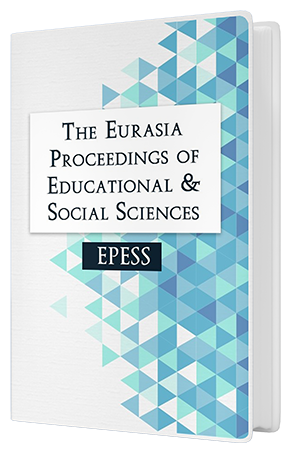Integrating STEM in to TVET Education Programs in QATAR: Issues, Concerns and Prospects
DOI:
https://doi.org/10.55549/epess.1051080Keywords:
TVET, STEM, Digital Literacy, Skills Gap, Integrative STEM, CurriculumAbstract
Qatar TVET education system faces unique challenges in that the percentage of vocational secondary school students constitute only 1.4% compared to world average of 15% due to the poor perception of TVET as lesser pathway than other academic-based education. This low perception is associated with sociocultural, economic and institutional factors. Another challenge is the poor link between vocational and general education and the link to labor market. Further challenge is how TVET institutions can develop new curricula, which can respond to the needs of the 21st century skills. This paper will discuss how STEM can help promote TVET education and what are the possible changes required to overcome those challenges. A survey on “Improving and enriching the Human Capital of the State of Qatar through Identification and Development of 21st Century Skills”, explored perceptions of both employers and TVET program leaders toward the skills needed for economic and social developments in a changing world by Meeting Human Capital Needs through 21st Century Skills including the perceptions on needed STEM and cognitive skills. A total of 85 managers and professionals (from more than forty establishments) completed the survey, together with 35 TVET program leaders located in one national university and six government TVET institutions together with 32 semi structured interviews. Descriptive statistics analysis showed a major mismatch between the perceptions of TVET program leaders and employers’ managers and professionals in many aspects., employers perceive the social skills as more important while TVET consider mathematical reasoning as more important employers perceive technological skills such as digital literacy as more important than what TVET leaders perceive. This presentation will identify several approaches to integration and discuss the advantages and disadvantages of the approaches employed. The presentation addresses the various planning approaches and resources required to effectively integrate STEM in TVET programs and curricula.Downloads
Published
Issue
Section
License
Copyright (c) 2021 The Eurasia Proceedings of Educational and Social Sciences

This work is licensed under a Creative Commons Attribution-NonCommercial-ShareAlike 4.0 International License.
The articles may be used for research, teaching, and private study purposes. Any substantial or systematic reproduction, redistribution, reselling, loan, sub-licensing, systematic supply, or distribution in any form to anyone is expressly forbidden. Authors alone are responsible for the contents of their articles. The journal owns the copyright of the articles. The publisher shall not be liable for any loss, actions, claims, proceedings, demand, or costs or damages whatsoever or howsoever caused arising directly or indirectly in connection with or arising out of the use of the research material. All authors are requested to disclose any actual or potential conflict of interest including any financial, personal or other relationships with other people or organizations regarding the submitted work.




